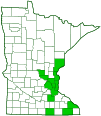Two-colored Bolete
(Baorangia bicolor)
Conservation • Description • Habitat • Ecology • Distribution • Taxonomy
|
|
||||||||||||||
Description |
Two-colored Bolete, also called Red and Yellow Bolete, is a common, variable, medium-sized to large mushroom. It occurs in the United States and southern Canada east of the Great Plains, in southern Mexico, and in Guatemala. In the U.S. it is common in the east, but in Minnesota it is restricted to the southeast quarter of the state. It is found in summer and early fall, scattered or in groups but not clustered (gregarious), in deciduous woodlands. It grows on the ground under oaks, possibly also under aspen. It has a mutually beneficial relationship (mycorrhizal) with the tiny rootlets of trees, absorbing sugars and amino acids while helping the tree absorb water. When it first appears, the cap is convex and usually pinkish to dark brick red, sometimes bright yellow. The surface is dry and minutely velvety. As it ages the cap broadens out, the surface becomes hairless, and the color fades. Yellow caps slowly develop red colors but remain yellow at the margins. Mature caps are 1½″ to 6¼″ (4 to 16 cm) in diameter, broadly convex to nearly flat, and reddish or pinkish. The margins are sometimes yellowish. On older specimens, the upper surface is sometimes finely cracked. The pore surface is bright yellow at first, fading to dull yellow at maturity. It rarely develops red colors. It bruises blue or bluish-green, sometimes quickly, sometimes slowly. The pore surface usually runs down the stem. There are 1 or 2 pores per 1⁄32″ (1 mm). The pore tubes are angular and very shallow, ⅛″ to 5⁄16″ (3 to 8 mm) deep. The stalk is solid, hairless, 2″ to 6″ (5 to 15 cm) long, and ⅝″ to 1¼″ (1.5 to 3.0 cm) thick. It is club-shaped at first, widest at the bottom. At maturity, the base is tapered but the stalk is otherwise more or less equal in thickness from there to the top. It is mostly red to purplish-red, bright yellow just near the top. The surface is usually not covered with a network of fine ridges (reticulate) but is sometimes slightly reticulate just near the top. It does not bruise when handled. The mycelium at the base of the stalk, which can be seen by brushing the dirt away, is yellow or sulfur-yellow. The flesh is thick and pale yellow. When sliced, it usually develops pale blue stains erratically, sometimes it does not change color, rarely it moderately turns blue. It is edible, but some people may have gastrointestinal upset after eating. Also, it closely resembles the poisonous Curry Bolete (Boletus sensibilis). For both of these reasons, it is best avoided. The spore print is olive-brown. |
Similar Species |
Habitat and Hosts |
Deciduous woodlands |
Ecology |
Season |
Summer to early fall |
Distribution |
||
|
Sources |
|
| 6/22/2024 | ||
Occurrence |
||
Common |
||
Taxonomy |
|
Kingdom |
Fungi (Fungi) |
Subkingdom |
Dikarya |
Phylum |
Basidiomycota (Basidiomycete Fungi) |
Subphylum |
Agaricomycotina (Higher Basidiomycetes) |
Class |
Agaricomycetes (Mushrooms, Bracket Fungi, Puffballs, and Allies) |
Subclass |
Agaricomycetidae |
Order |
Boletales (boletes and allies) |
Suborder |
Boletineae |
Family |
|
Genus |
Baorangia |
This species was formerly classified as Boletus bicolor. That name was illegitimate because it was already applied to a European species that is now lost to science. Recent molecular studies (Nuhn et al., 2013, and Wu et al., 2014) found that it was not closely related to the type species of Boletus. In 2015 it was transferred to the genus Baorangia. |
|
Subordinate Taxa |
|
|
|
Synonyms |
|
Baorangia bicolor bicolor Baorangia rubelloides Boletus bicolor Boletus rubellus bicolor Ceriomyces bicolor Suillus bicolor Xerocomus bicolor |
|
Common Names |
|
Red and Yellow Bolete Two-colored Bolete |
|
Glossary
Mycelium
The vegetative part of a fungus; consisting of a mass of branching, thread-like hyphae, through which a fungus absorbs nutrients from its environment; and excluding the fruiting, reproductive structure.
Mycorrhizal
A symbiotic, usually beneficial relationship between a fungus and the tiny rootlets of a plant, usually a tree.
Visitor Photos |
||
Share your photo of this fungus. |
||
This button not working for you? |
||
Paul |
||
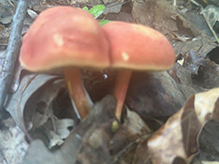 |
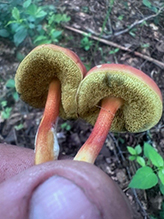 |
|
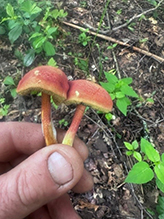 |
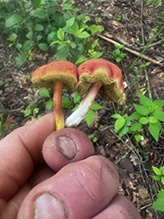 |
|
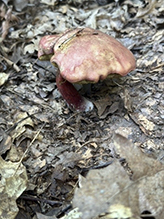 |
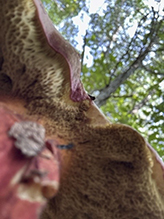 |
|
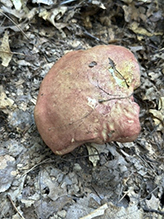 |
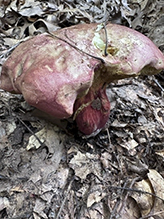 |
|
MinnesotaSeasons.com Photos |
||

Slideshows |
|

Visitor Videos |
||
Share your video of this fungus. |
||
This button not working for you? |
||
|
Other Videos |
||
Red and yellow bolete, or two colored bolete, identification. |
About
Aug 1, 2019 I welcome you yet again into the woods of Eastern Kentucky with me to learn about the red and yellow bolete, a summer and fall wild edible! |
Foraging, Boletus sensibilis and Boletus bicolor |
About
Jul 22, 2011 Wild Mushroom Foray with the Connecticut Valley Mycological Society. |

Created: 9/10/2023 Last Updated: © MinnesotaSeasons.com. All rights reserved. |
